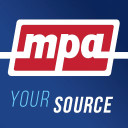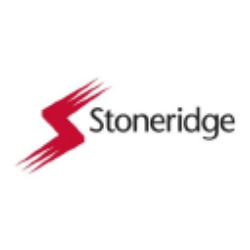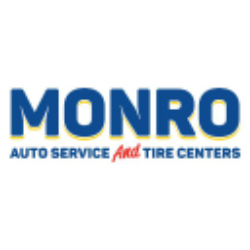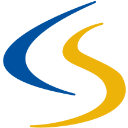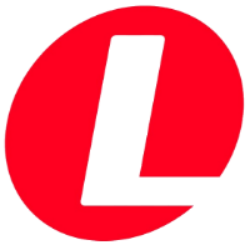SMP

Standard Motor Products, Inc.
SMP
(3.0)31,39 USD
3.38% ROA
5.66% ROE
17.36x PER
675.054.061,00 USD
35.22% DER
3.73% Yield
2.56% NPM
Standard Motor Products, Inc. Stock Analysis
Standard Motor Products, Inc. Fundamental Analysis
Fundamental analysis in stock investing is like studying the foundation of a house before buying it. It involves looking at a company's financial health, like its earnings, assets, and debts, to determine if it's a good investment based on its fundamental strength and potential for growth.
| # | Analysis | Rating |
|---|---|---|
| 1 |
DER
The stock has a low debt to equity ratio (46%), which means it has a small amount of debt compared to the ownership it holds |
|
| 2 |
Assets Growth
With a track record of consistent revenue growth in the past five years, this company presents a compelling opportunity. |
|
| 3 |
Dividend
Investors can trust the company's impressive dividend track record, consistently distributing dividends over the past five years, showcasing a strong commitment to rewarding shareholders. |
|
| 4 |
ROE
ROE in an average range (8.48%) suggests satisfactory profitability and decent utilization of shareholders' equity. |
|
| 5 |
ROA
The stock's ROA (4.86%) indicates that it's doing well in making money from the things it owns. This makes it a good option to invest and make consistent profits. |
|
| 6 |
PBV
The stock's PBV ratio (1.22x) indicates a justifiable valuation, presenting a compelling choice for investors seeking reasonable returns. |
|
| 7 |
Graham Number
The Graham number of this company suggests that its stock price may be undervalued, indicating a potentially attractive investment opportunity. |
|
| 8 |
Dividend Growth
The company's dividend growth has been consistently strong over the past three years, with annual increases that demonstrate its commitment to rewarding shareholders. |
|
| 9 |
Buffet Intrinsic Value
The company's stock seems undervalued (843) by Warren Buffett's formula, indicating a promising investment opportunity as its intrinsic value exceeds the market price. |
|
| 10 |
Revenue Growth
Regrettably, this company's revenue has shown no signs of growth over the past three years, suggesting limited potential for returns and making it a less appealing choice. |
|
| 11 |
Net Profit Growth
This company's net profit has remained flat over the past five years, suggesting a lack of growth and making it a less attractive investment opportunity. |
Standard Motor Products, Inc. Technical Analysis
Technical analysis in stock investing is like reading the patterns on a weather map to predict future weather conditions. It involves studying past stock price movements and trading volumes to make predictions about where a stock's price might go next, without necessarily looking at the company's financial health.
| # | Analysis | Recommendation |
|---|---|---|
| 1 | Awesome Oscillator | Buy |
| 2 | MACD | Sell |
| 3 | RSI | Hold |
| 4 | Stoch RSI | Sell |
Standard Motor Products, Inc. Price Chart
Financial Statements
Financial statements are like report cards for companies. They show how much money a company makes (income statement), what it owns and owes (balance sheet), and where it spends its money (cash flow statement), helping stock investors understand if a company is healthy and worth investing in.
Income Statements
An income statement for a company is like a scoreboard for its profits and losses. It shows how much money the company made (revenue) and how much it spent to make that money (expenses), helping stock investors see if a company is making a profit or not.
Revenue in stock investing is the total amount of money a company earns from its sales, and it's a key factor that investors consider to assess a company's financial performance and growth potential.
| Year | Revenue | Growth |
|---|---|---|
| 1985 | 242.800.000 | |
| 1986 | 286.400.000 | 15.22% |
| 1987 | 356.400.000 | 19.64% |
| 1988 | 398.400.000 | 10.54% |
| 1989 | 428.900.000 | 7.11% |
| 1990 | 507.800.000 | 15.54% |
| 1991 | 534.800.000 | 5.05% |
| 1992 | 535.600.000 | 0.15% |
| 1993 | 582.900.000 | 8.11% |
| 1994 | 640.800.000 | 9.04% |
| 1995 | 663.500.000 | 3.42% |
| 1996 | 721.800.000 | 8.08% |
| 1997 | 559.800.000 | -28.94% |
| 1998 | 649.400.000 | 13.8% |
| 1999 | 658.200.000 | 1.34% |
| 2000 | 606.450.000 | -8.53% |
| 2001 | 608.073.000 | 0.27% |
| 2002 | 598.437.000 | -1.61% |
| 2003 | 678.783.000 | 11.84% |
| 2004 | 824.283.000 | 17.65% |
| 2005 | 830.413.000 | 0.74% |
| 2006 | 812.024.000 | -2.26% |
| 2007 | 790.185.000 | -2.76% |
| 2008 | 775.241.000 | -1.93% |
| 2009 | 735.424.000 | -5.41% |
| 2010 | 810.910.000 | 9.31% |
| 2011 | 874.625.000 | 7.28% |
| 2012 | 948.916.000 | 7.83% |
| 2013 | 983.704.000 | 3.54% |
| 2014 | 980.392.000 | -0.34% |
| 2015 | 971.975.000 | -0.87% |
| 2016 | 1.058.482.000 | 8.17% |
| 2017 | 1.116.143.000 | 5.17% |
| 2018 | 1.092.051.000 | -2.21% |
| 2019 | 1.137.913.000 | 4.03% |
| 2020 | 1.128.588.000 | -0.83% |
| 2021 | 1.298.816.000 | 13.11% |
| 2022 | 1.371.815.000 | 5.32% |
| 2023 | 1.545.652.000 | 11.25% |
| 2023 | 1.358.272.000 | -13.8% |
| 2024 | 1.559.316.000 | 12.89% |
Research and Development Expenses are the costs a company incurs to create and improve its products or services, which can be important for investors to evaluate a company's innovation and potential for future growth.
| Year | Research and Development Expenses | Growth |
|---|---|---|
| 1985 | 0 | |
| 1986 | 0 | 0% |
| 1987 | 0 | 0% |
| 1988 | 0 | 0% |
| 1989 | 0 | 0% |
| 1990 | 0 | 0% |
| 1991 | 0 | 0% |
| 1992 | 0 | 0% |
| 1993 | 0 | 0% |
| 1994 | 0 | 0% |
| 1995 | 0 | 0% |
| 1996 | 0 | 0% |
| 1997 | 0 | 0% |
| 1998 | 0 | 0% |
| 1999 | 0 | 0% |
| 2000 | 0 | 0% |
| 2001 | 0 | 0% |
| 2002 | 0 | 0% |
| 2003 | 0 | 0% |
| 2004 | 0 | 0% |
| 2005 | 0 | 0% |
| 2006 | 0 | 0% |
| 2007 | 0 | 0% |
| 2008 | 0 | 0% |
| 2009 | 0 | 0% |
| 2010 | 0 | 0% |
| 2011 | 0 | 0% |
| 2012 | 0 | 0% |
| 2013 | 0 | 0% |
| 2014 | 0 | 0% |
| 2015 | 0 | 0% |
| 2016 | 0 | 0% |
| 2017 | 0 | 0% |
| 2018 | 0 | 0% |
| 2019 | 0 | 0% |
| 2020 | 0 | 0% |
| 2021 | 0 | 0% |
| 2022 | 0 | 0% |
| 2023 | 0 | 0% |
| 2023 | 0 | 0% |
| 2024 | 0 | 0% |
General and Administrative Expenses are the costs a company incurs to run its day-to-day operations, such as office rent, salaries, and utilities, which investors consider to understand a company's overall efficiency and management effectiveness.
| Year | General and Administrative Expenses | Growth |
|---|---|---|
| 1985 | 0 | |
| 1986 | 0 | 0% |
| 1987 | 0 | 0% |
| 1988 | 0 | 0% |
| 1989 | 0 | 0% |
| 1990 | 0 | 0% |
| 1991 | 0 | 0% |
| 1992 | 0 | 0% |
| 1993 | 0 | 0% |
| 1994 | 178.700.000 | 100% |
| 1995 | 186.900.000 | 4.39% |
| 1996 | 198.000.000 | 5.61% |
| 1997 | 170.000.000 | -16.47% |
| 1998 | 161.700.000 | -5.13% |
| 1999 | 162.600.000 | 0.55% |
| 2000 | 159.821.000 | -1.74% |
| 2001 | 154.315.000 | -3.57% |
| 2002 | 129.142.000 | -19.49% |
| 2003 | 153.303.000 | 15.76% |
| 2004 | 178.852.000 | 14.28% |
| 2005 | 166.556.000 | -7.38% |
| 2006 | 168.050.000 | 0.89% |
| 2007 | 168.950.000 | 0.53% |
| 2008 | 166.199.000 | -1.66% |
| 2009 | 146.642.000 | -13.34% |
| 2010 | 159.433.000 | 8.02% |
| 2011 | 163.845.000 | 2.69% |
| 2012 | 187.495.000 | 12.61% |
| 2013 | 201.256.000 | 6.84% |
| 2014 | 193.525.000 | -3.99% |
| 2015 | 206.287.000 | 6.19% |
| 2016 | 221.658.000 | 6.93% |
| 2017 | 223.584.000 | 0.86% |
| 2018 | 231.336.000 | 3.35% |
| 2019 | 0 | 0% |
| 2020 | 0 | 0% |
| 2021 | 0 | 0% |
| 2022 | 0 | 0% |
| 2023 | 0 | 0% |
| 2023 | 0 | 0% |
| 2024 | 0 | 0% |
EBITDA stands for Earnings Before Interest, Taxes, Depreciation, and Amortization. It is a measure that helps stock investors analyze a company's profitability by looking at its earnings without considering certain expenses. This helps to get a clearer picture of the company's financial performance and its ability to generate cash flow.
| Year | EBITDA | Growth |
|---|---|---|
| 1985 | 21.500.000 | |
| 1986 | 36.900.000 | 41.73% |
| 1987 | 37.900.000 | 2.64% |
| 1988 | 27.400.000 | -38.32% |
| 1989 | 40.500.000 | 32.35% |
| 1990 | 35.800.000 | -13.13% |
| 1991 | 33.400.000 | -7.19% |
| 1992 | 32.200.000 | -3.73% |
| 1993 | 48.000.000 | 32.92% |
| 1994 | 57.400.000 | 16.38% |
| 1995 | 43.100.000 | -33.18% |
| 1996 | 61.000.000 | 29.34% |
| 1997 | 28.500.000 | -114.04% |
| 1998 | 61.200.000 | 53.43% |
| 1999 | 46.744.000 | -30.93% |
| 2000 | 49.633.000 | 5.82% |
| 2001 | 34.032.000 | -45.84% |
| 2002 | 41.196.000 | 17.39% |
| 2003 | 38.561.000 | -6.83% |
| 2004 | 28.725.000 | -34.24% |
| 2005 | 39.474.000 | 27.23% |
| 2006 | 54.896.000 | 28.09% |
| 2007 | 42.248.000 | -29.94% |
| 2008 | -918.000 | 4702.18% |
| 2009 | 35.569.000 | 102.58% |
| 2010 | 60.792.000 | 41.49% |
| 2011 | 82.414.000 | 26.24% |
| 2012 | 87.201.000 | 5.49% |
| 2013 | 104.459.000 | 16.52% |
| 2014 | 100.664.000 | -3.77% |
| 2015 | 93.277.000 | -7.92% |
| 2016 | 120.583.000 | 22.64% |
| 2017 | 122.687.000 | 1.71% |
| 2018 | 104.961.000 | -16.89% |
| 2019 | 122.891.000 | 14.59% |
| 2020 | 136.030.000 | 9.66% |
| 2021 | 159.736.000 | 14.84% |
| 2022 | 137.247.000 | -16.39% |
| 2023 | 176.188.000 | 22.1% |
| 2023 | 121.653.000 | -44.83% |
| 2024 | 193.120.000 | 37.01% |
Gross profit is the money a company makes from selling its products or services after subtracting the cost of producing or providing them, and it is an important measure for investors to understand a company's profitability.
| Year | Gross Profit | Growth |
|---|---|---|
| 1985 | 99.500.000 | |
| 1986 | 125.600.000 | 20.78% |
| 1987 | 143.100.000 | 12.23% |
| 1988 | 162.300.000 | 11.83% |
| 1989 | 165.700.000 | 2.05% |
| 1990 | 198.500.000 | 16.52% |
| 1991 | 196.100.000 | -1.22% |
| 1992 | 198.700.000 | 1.31% |
| 1993 | 219.800.000 | 9.6% |
| 1994 | 236.100.000 | 6.9% |
| 1995 | 233.100.000 | -1.29% |
| 1996 | 251.100.000 | 7.17% |
| 1997 | 198.500.000 | -26.5% |
| 1998 | 222.900.000 | 10.95% |
| 1999 | 209.300.000 | -6.5% |
| 2000 | 209.407.000 | 0.05% |
| 2001 | 169.858.000 | -23.28% |
| 2002 | 157.544.000 | -7.82% |
| 2003 | 174.772.000 | 9.86% |
| 2004 | 194.993.000 | 10.37% |
| 2005 | 185.980.000 | -4.85% |
| 2006 | 205.221.000 | 9.38% |
| 2007 | 202.275.000 | -1.46% |
| 2008 | 184.156.000 | -9.84% |
| 2009 | 177.224.000 | -3.91% |
| 2010 | 207.606.000 | 14.63% |
| 2011 | 229.147.000 | 9.4% |
| 2012 | 259.669.000 | 11.75% |
| 2013 | 290.454.000 | 10.6% |
| 2014 | 289.630.000 | -0.28% |
| 2015 | 280.988.000 | -3.08% |
| 2016 | 322.487.000 | 12.87% |
| 2017 | 326.656.000 | 1.28% |
| 2018 | 312.787.000 | -4.43% |
| 2019 | 331.800.000 | 5.73% |
| 2020 | 336.655.000 | 1.44% |
| 2021 | 376.931.000 | 10.69% |
| 2022 | 382.539.000 | 1.47% |
| 2023 | 459.040.000 | 16.67% |
| 2023 | 388.826.000 | -18.06% |
| 2024 | 436.988.000 | 11.02% |
Net income in stock investing is like the money a company actually gets to keep as profit after paying all its bills, and it's an important measure to understand how well a company is doing financially.
| Year | Net Profit | Growth |
|---|---|---|
| 1985 | 10.500.000 | |
| 1986 | 18.600.000 | 43.55% |
| 1987 | 16.300.000 | -14.11% |
| 1988 | 9.300.000 | -75.27% |
| 1989 | 13.100.000 | 29.01% |
| 1990 | 7.700.000 | -70.13% |
| 1991 | 6.700.000 | -14.93% |
| 1992 | 8.900.000 | 24.72% |
| 1993 | 17.500.000 | 49.14% |
| 1994 | 23.700.000 | 26.16% |
| 1995 | 16.100.000 | -47.2% |
| 1996 | 14.700.000 | -9.52% |
| 1997 | -34.500.000 | 142.61% |
| 1998 | 22.300.000 | 254.71% |
| 1999 | 7.600.000 | -193.42% |
| 2000 | 9.729.000 | 21.88% |
| 2001 | -2.485.000 | 491.51% |
| 2002 | -30.556.000 | 91.87% |
| 2003 | -1.518.000 | -1912.91% |
| 2004 | -14.380.000 | 89.44% |
| 2005 | -3.545.000 | -305.64% |
| 2006 | 9.411.000 | 137.67% |
| 2007 | 2.275.000 | -313.67% |
| 2008 | -22.894.000 | 109.94% |
| 2009 | 3.483.000 | 757.31% |
| 2010 | 21.960.000 | 84.14% |
| 2011 | 62.401.000 | 64.81% |
| 2012 | 41.353.000 | -50.9% |
| 2013 | 51.450.000 | 19.62% |
| 2014 | 43.029.000 | -19.57% |
| 2015 | 46.018.000 | 6.5% |
| 2016 | 60.430.000 | 23.85% |
| 2017 | 37.976.000 | -59.13% |
| 2018 | 43.003.000 | 11.69% |
| 2019 | 57.917.000 | 25.75% |
| 2020 | 80.417.000 | 27.98% |
| 2021 | 90.886.000 | 11.52% |
| 2022 | 55.351.000 | -64.2% |
| 2023 | 26.636.000 | -107.81% |
| 2023 | 34.148.000 | 22% |
| 2024 | 68.252.000 | 49.97% |
EPS, or earnings per share, is a measure that shows how much profit a company has earned for each outstanding share of its stock, and it is important for stock investors as it helps understand the profitability of a company and compare it with other companies in the market.
| Year | Earning per Share (EPS) | Growth |
|---|---|---|
| 1985 | 1 | |
| 1986 | 1 | 100% |
| 1987 | 1 | 0% |
| 1988 | 1 | 0% |
| 1989 | 1 | 100% |
| 1990 | 1 | 0% |
| 1991 | 1 | 0% |
| 1992 | 1 | 0% |
| 1993 | 1 | 100% |
| 1994 | 2 | 0% |
| 1995 | 1 | 0% |
| 1996 | 1 | 0% |
| 1997 | -3 | 150% |
| 1998 | 2 | 300% |
| 1999 | 1 | 0% |
| 2000 | 1 | 0% |
| 2001 | 0 | 0% |
| 2002 | -3 | 100% |
| 2003 | 0 | 0% |
| 2004 | -1 | 0% |
| 2005 | 0 | 0% |
| 2006 | 1 | 0% |
| 2007 | 0 | 0% |
| 2008 | -1 | 100% |
| 2009 | 0 | 0% |
| 2010 | 1 | 0% |
| 2011 | 3 | 100% |
| 2012 | 2 | -100% |
| 2013 | 2 | 50% |
| 2014 | 2 | -100% |
| 2015 | 2 | 50% |
| 2016 | 3 | 0% |
| 2017 | 2 | -100% |
| 2018 | 2 | 0% |
| 2019 | 3 | 50% |
| 2020 | 4 | 33.33% |
| 2021 | 4 | 25% |
| 2022 | 3 | -33.33% |
| 2023 | 1 | -200% |
| 2023 | 2 | 0% |
| 2024 | 3 | 66.67% |
Cashflow Statements
Cashflow statements show the movement of money in and out of a company, helping stock investors understand how much money a company makes and spends. By examining cashflow statements, investors can assess if a company is generating enough cash to pay its bills, invest in growth, and provide returns to stockholders.
Free cash flow is the leftover cash that a company generates after covering its operating expenses and capital expenditures, which is important for stock investors as it shows how much money a company has available to invest in growth, pay dividends, or reduce debt.
| Year | Free Cashflow | Growth |
|---|---|---|
| 1989 | -49.600.000 | |
| 1990 | 10.700.000 | 563.55% |
| 1991 | 38.400.000 | 72.14% |
| 1992 | 16.300.000 | -135.58% |
| 1993 | 7.800.000 | -108.97% |
| 1994 | 8.500.000 | 8.24% |
| 1995 | -24.800.000 | 134.27% |
| 1996 | -42.600.000 | 41.78% |
| 1997 | 56.100.000 | 175.94% |
| 1998 | 79.400.000 | 29.35% |
| 1999 | -5.800.000 | 1468.97% |
| 2000 | -17.605.000 | 67.05% |
| 2001 | 26.449.000 | 166.56% |
| 2002 | 52.585.000 | 49.7% |
| 2003 | 22.537.000 | -133.33% |
| 2004 | -6.308.000 | 457.28% |
| 2005 | -12.195.000 | 48.27% |
| 2006 | 23.609.000 | 151.65% |
| 2007 | -21.791.000 | 208.34% |
| 2008 | 34.433.000 | 163.29% |
| 2009 | 95.122.000 | 63.8% |
| 2010 | 17.272.000 | -450.73% |
| 2011 | 64.270.000 | 73.13% |
| 2012 | 81.749.000 | 21.38% |
| 2013 | 46.206.000 | -76.92% |
| 2014 | 33.083.000 | -39.67% |
| 2015 | 47.124.000 | 29.8% |
| 2016 | 76.884.000 | 38.71% |
| 2017 | 40.175.000 | -91.37% |
| 2018 | 50.117.000 | 19.84% |
| 2019 | 60.743.000 | 17.49% |
| 2020 | 80.076.000 | 24.14% |
| 2021 | 59.689.000 | -34.16% |
| 2022 | -53.489.000 | 211.59% |
| 2023 | 85.053.000 | 162.89% |
| 2023 | 115.627.000 | 26.44% |
| 2024 | 22.722.000 | -408.88% |
Operating cash flow represents the cash generated or consumed by a company's day-to-day operations, excluding external investing or financing activities, and is crucial for stock investors as it shows how much cash a company is generating from its core business operations.
| Year | Operating Cashflow | Growth |
|---|---|---|
| 1989 | -26.400.000 | |
| 1990 | 26.900.000 | 198.14% |
| 1991 | 50.400.000 | 46.63% |
| 1992 | 31.600.000 | -59.49% |
| 1993 | 20.100.000 | -57.21% |
| 1994 | 21.100.000 | 4.74% |
| 1995 | 800.000 | -2537.5% |
| 1996 | -21.200.000 | 103.77% |
| 1997 | 71.700.000 | 129.57% |
| 1998 | 108.700.000 | 34.04% |
| 1999 | 26.000.000 | -318.08% |
| 2000 | -953.000 | 2828.23% |
| 2001 | 40.189.000 | 102.37% |
| 2002 | 60.183.000 | 33.22% |
| 2003 | 31.463.000 | -91.28% |
| 2004 | 3.466.000 | -807.76% |
| 2005 | -2.238.000 | 254.87% |
| 2006 | 33.689.000 | 106.64% |
| 2007 | -7.796.000 | 532.13% |
| 2008 | 44.933.000 | 117.35% |
| 2009 | 102.296.000 | 56.08% |
| 2010 | 28.078.000 | -264.33% |
| 2011 | 75.307.000 | 62.72% |
| 2012 | 93.560.000 | 19.51% |
| 2013 | 57.616.000 | -62.39% |
| 2014 | 46.987.000 | -22.62% |
| 2015 | 65.171.000 | 27.9% |
| 2016 | 97.805.000 | 33.37% |
| 2017 | 64.617.000 | -51.36% |
| 2018 | 70.258.000 | 8.03% |
| 2019 | 76.928.000 | 8.67% |
| 2020 | 97.896.000 | 21.42% |
| 2021 | 85.564.000 | -14.41% |
| 2022 | -27.533.000 | 410.77% |
| 2023 | 93.523.000 | 129.44% |
| 2023 | 144.260.000 | 35.17% |
| 2024 | 35.577.000 | -305.49% |
Capex, short for capital expenditures, refers to the money a company spends on acquiring or upgrading tangible assets like buildings, equipment, or technology, which is important for stock investors as it indicates how much a company is investing in its infrastructure to support future growth and profitability.
| Year | Capital Expenditure | Growth |
|---|---|---|
| 1989 | 23.200.000 | |
| 1990 | 16.200.000 | -43.21% |
| 1991 | 12.000.000 | -35% |
| 1992 | 15.300.000 | 21.57% |
| 1993 | 12.300.000 | -24.39% |
| 1994 | 12.600.000 | 2.38% |
| 1995 | 25.600.000 | 50.78% |
| 1996 | 21.400.000 | -19.63% |
| 1997 | 15.600.000 | -37.18% |
| 1998 | 29.300.000 | 46.76% |
| 1999 | 31.800.000 | 7.86% |
| 2000 | 16.652.000 | -90.97% |
| 2001 | 13.740.000 | -21.19% |
| 2002 | 7.598.000 | -80.84% |
| 2003 | 8.926.000 | 14.88% |
| 2004 | 9.774.000 | 8.68% |
| 2005 | 9.957.000 | 1.84% |
| 2006 | 10.080.000 | 1.22% |
| 2007 | 13.995.000 | 27.97% |
| 2008 | 10.500.000 | -33.29% |
| 2009 | 7.174.000 | -46.36% |
| 2010 | 10.806.000 | 33.61% |
| 2011 | 11.037.000 | 2.09% |
| 2012 | 11.811.000 | 6.55% |
| 2013 | 11.410.000 | -3.51% |
| 2014 | 13.904.000 | 17.94% |
| 2015 | 18.047.000 | 22.96% |
| 2016 | 20.921.000 | 13.74% |
| 2017 | 24.442.000 | 14.41% |
| 2018 | 20.141.000 | -21.35% |
| 2019 | 16.185.000 | -24.44% |
| 2020 | 17.820.000 | 9.18% |
| 2021 | 25.875.000 | 31.13% |
| 2022 | 25.956.000 | 0.31% |
| 2023 | 8.470.000 | -206.45% |
| 2023 | 28.633.000 | 70.42% |
| 2024 | 12.855.000 | -122.74% |
Balance Sheet
Balance sheets provide a snapshot of a company's financial health and its assets (such as cash, inventory, and property) and liabilities (like debts and obligations) at a specific point in time. For stock investors, balance sheets help assess the company's overall worth and evaluate its ability to meet financial obligations and support future growth.
Equity refers to the ownership interest or stake that shareholders have in a company, representing their claim on its assets and earnings after all debts and liabilities are paid.
| Year | Equity | Growth |
|---|---|---|
| 1985 | 120.900.000 | |
| 1986 | 135.600.000 | 10.84% |
| 1987 | 146.100.000 | 7.19% |
| 1988 | 151.200.000 | 3.37% |
| 1989 | 145.700.000 | -3.77% |
| 1990 | 151.000.000 | 3.51% |
| 1991 | 155.300.000 | 2.77% |
| 1992 | 161.100.000 | 3.6% |
| 1993 | 178.200.000 | 9.6% |
| 1994 | 195.100.000 | 8.66% |
| 1995 | 210.400.000 | 7.27% |
| 1996 | 222.900.000 | 5.61% |
| 1997 | 183.400.000 | -21.54% |
| 1998 | 205.000.000 | 10.54% |
| 1999 | 203.500.000 | -0.74% |
| 2000 | 194.305.000 | -4.73% |
| 2001 | 185.687.000 | -4.64% |
| 2002 | 153.881.000 | -20.67% |
| 2003 | 226.041.000 | 31.92% |
| 2004 | 207.312.000 | -9.03% |
| 2005 | 185.707.000 | -11.63% |
| 2006 | 190.699.000 | 2.62% |
| 2007 | 188.364.000 | -1.24% |
| 2008 | 163.545.000 | -15.18% |
| 2009 | 193.878.000 | 15.65% |
| 2010 | 209.883.000 | 7.63% |
| 2011 | 271.953.000 | 22.82% |
| 2012 | 307.587.000 | 11.59% |
| 2013 | 349.432.000 | 11.98% |
| 2014 | 374.153.000 | 6.61% |
| 2015 | 391.979.000 | 4.55% |
| 2016 | 441.028.000 | 11.12% |
| 2017 | 453.654.000 | 2.78% |
| 2018 | 467.201.000 | 2.9% |
| 2019 | 504.228.000 | 7.34% |
| 2020 | 550.236.000 | 8.36% |
| 2021 | 612.627.000 | 10.18% |
| 2022 | 621.038.000 | 1.35% |
| 2023 | 645.473.000 | 3.79% |
| 2023 | 650.873.000 | 0.83% |
| 2024 | 654.322.000 | 0.53% |
Assets represent the valuable resources that a company owns, such as cash, inventory, property, and equipment, and understanding a company's assets helps investors assess its value and potential for generating future profits.
| Year | Assets | Growth |
|---|---|---|
| 1985 | 174.700.000 | |
| 1986 | 249.200.000 | 29.9% |
| 1987 | 277.200.000 | 10.1% |
| 1988 | 353.900.000 | 21.67% |
| 1989 | 406.000.000 | 12.83% |
| 1990 | 422.100.000 | 3.81% |
| 1991 | 392.800.000 | -7.46% |
| 1992 | 374.900.000 | -4.77% |
| 1993 | 423.300.000 | 11.43% |
| 1994 | 462.400.000 | 8.46% |
| 1995 | 512.200.000 | 9.72% |
| 1996 | 624.800.000 | 18.02% |
| 1997 | 577.100.000 | -8.27% |
| 1998 | 521.600.000 | -10.64% |
| 1999 | 556.000.000 | 6.19% |
| 2000 | 549.396.000 | -1.2% |
| 2001 | 509.429.000 | -7.85% |
| 2002 | 490.758.000 | -3.8% |
| 2003 | 694.525.000 | 29.34% |
| 2004 | 656.569.000 | -5.78% |
| 2005 | 653.044.000 | -0.54% |
| 2006 | 640.092.000 | -2.02% |
| 2007 | 678.092.000 | 5.6% |
| 2008 | 575.027.000 | -17.92% |
| 2009 | 484.459.000 | -18.69% |
| 2010 | 492.801.000 | 1.69% |
| 2011 | 550.722.000 | 10.52% |
| 2012 | 576.594.000 | 4.49% |
| 2013 | 615.523.000 | 6.32% |
| 2014 | 673.551.000 | 8.62% |
| 2015 | 681.064.000 | 1.1% |
| 2016 | 768.697.000 | 11.4% |
| 2017 | 787.567.000 | 2.4% |
| 2018 | 843.132.000 | 6.59% |
| 2019 | 912.730.000 | 7.63% |
| 2020 | 956.540.000 | 4.58% |
| 2021 | 1.197.961.000 | 20.15% |
| 2022 | 1.254.929.000 | 4.54% |
| 2023 | 1.299.930.000 | 3.46% |
| 2023 | 1.293.047.000 | -0.53% |
| 2024 | 1.374.328.000 | 5.91% |
Liabilities refer to the financial obligations or debts that a company owes to creditors or external parties, and understanding a company's liabilities is important for investors as it helps assess the company's financial risk and ability to meet its obligations.
| Year | Liabilities | Growth |
|---|---|---|
| 1985 | 53.800.000 | |
| 1986 | 113.600.000 | 52.64% |
| 1987 | 131.100.000 | 13.35% |
| 1988 | 202.700.000 | 35.32% |
| 1989 | 260.300.000 | 22.13% |
| 1990 | 271.100.000 | 3.98% |
| 1991 | 237.500.000 | -14.15% |
| 1992 | 213.800.000 | -11.09% |
| 1993 | 245.100.000 | 12.77% |
| 1994 | 267.300.000 | 8.31% |
| 1995 | 301.800.000 | 11.43% |
| 1996 | 401.900.000 | 24.91% |
| 1997 | 393.700.000 | -2.08% |
| 1998 | 316.600.000 | -24.35% |
| 1999 | 352.500.000 | 10.18% |
| 2000 | 355.091.000 | 0.73% |
| 2001 | 323.742.000 | -9.68% |
| 2002 | 336.877.000 | 3.9% |
| 2003 | 468.484.000 | 28.09% |
| 2004 | 449.257.000 | -4.28% |
| 2005 | 467.337.000 | 3.87% |
| 2006 | 449.393.000 | -3.99% |
| 2007 | 489.728.000 | 8.24% |
| 2008 | 411.482.000 | -19.02% |
| 2009 | 290.581.000 | -41.61% |
| 2010 | 282.918.000 | -2.71% |
| 2011 | 278.769.000 | -1.49% |
| 2012 | 269.007.000 | -3.63% |
| 2013 | 266.091.000 | -1.1% |
| 2014 | 299.398.000 | 11.12% |
| 2015 | 289.085.000 | -3.57% |
| 2016 | 327.669.000 | 11.78% |
| 2017 | 333.913.000 | 1.87% |
| 2018 | 375.931.000 | 11.18% |
| 2019 | 408.502.000 | 7.97% |
| 2020 | 406.304.000 | -0.54% |
| 2021 | 585.334.000 | 30.59% |
| 2022 | 633.891.000 | 7.66% |
| 2023 | 654.457.000 | 3.14% |
| 2023 | 642.174.000 | -1.91% |
| 2024 | 720.006.000 | 10.81% |
Standard Motor Products, Inc. Financial Ratio (TTM)
Valuation Metrics
- Revenue per Share
- 64.24
- Net Income per Share
- 1.79
- Price to Earning Ratio
- 17.36x
- Price To Sales Ratio
- 0.48x
- POCF Ratio
- 7.14
- PFCF Ratio
- 12.81
- Price to Book Ratio
- 1.06
- EV to Sales
- 0.69
- EV Over EBITDA
- 7.17
- EV to Operating CashFlow
- 10.16
- EV to FreeCashFlow
- 18.28
- Earnings Yield
- 0.06
- FreeCashFlow Yield
- 0.08
- Market Cap
- 0,68 Bil.
- Enterprise Value
- 0,96 Bil.
- Graham Number
- 34.42
- Graham NetNet
- -11.54
Income Statement Metrics
- Net Income per Share
- 1.79
- Income Quality
- 2.36
- ROE
- 0.06
- Return On Assets
- 0.03
- Return On Capital Employed
- 0.1
- Net Income per EBT
- 0.45
- EBT Per Ebit
- 0.79
- Ebit per Revenue
- 0.07
- Effective Tax Rate
- 0.23
Margins
- Sales, General, & Administrative to Revenue
- 0
- Research & Developement to Revenue
- 0
- Stock Based Compensation to Revenue
- 0
- Gross Profit Margin
- 0.28
- Operating Profit Margin
- 0.07
- Pretax Profit Margin
- 0.06
- Net Profit Margin
- 0.03
Dividends
- Dividend Yield
- 0.04
- Dividend Yield %
- 3.73
- Payout Ratio
- 0.65
- Dividend Per Share
- 1.16
Operating Metrics
- Operating Cashflow per Share
- 4.35
- Free CashFlow per Share
- 2.42
- Capex to Operating CashFlow
- 0.44
- Capex to Revenue
- 0.03
- Capex to Depreciation
- 1.43
- Return on Invested Capital
- 0.09
- Return on Tangible Assets
- 0.03
- Days Sales Outstanding
- 62.46
- Days Payables Outstanding
- 38.23
- Days of Inventory on Hand
- 191.46
- Receivables Turnover
- 5.84
- Payables Turnover
- 9.55
- Inventory Turnover
- 1.91
- Capex per Share
- 1.93
Balance Sheet
- Cash per Share
- 1,20
- Book Value per Share
- 30,06
- Tangible Book Value per Share
- 19.86
- Shareholders Equity per Share
- 29.4
- Interest Debt per Share
- 10.86
- Debt to Equity
- 0.35
- Debt to Assets
- 0.16
- Net Debt to EBITDA
- 2.14
- Current Ratio
- 2.46
- Tangible Asset Value
- 0,43 Bil.
- Net Current Asset Value
- 0,10 Bil.
- Invested Capital
- 937604000
- Working Capital
- 0,48 Bil.
- Intangibles to Total Assets
- 0.16
- Average Receivables
- 0,22 Bil.
- Average Payables
- 0,10 Bil.
- Average Inventory
- 532505500
- Debt to Market Cap
- 0.33
Dividends
Dividends in stock investing are like rewards that companies give to their shareholders. They are a portion of the company's profits distributed to investors, typically in the form of cash payments, as a way for them to share in the company's success.
| Year | Dividends | Growth |
|---|---|---|
| 1985 | 0 | |
| 1986 | 0 | 0% |
| 1987 | 0 | 0% |
| 1988 | 0 | 0% |
| 1989 | 0 | 0% |
| 1990 | 0 | 0% |
| 1991 | 0 | 0% |
| 1992 | 0 | 0% |
| 1993 | 0 | 0% |
| 1994 | 0 | 0% |
| 1995 | 0 | 0% |
| 1996 | 0 | 0% |
| 1997 | 0 | 0% |
| 1998 | 0 | 0% |
| 1999 | 0 | 0% |
| 2000 | 0 | 0% |
| 2001 | 0 | 0% |
| 2002 | 0 | 0% |
| 2003 | 0 | 0% |
| 2004 | 0 | 0% |
| 2005 | 0 | 0% |
| 2006 | 0 | 0% |
| 2007 | 0 | 0% |
| 2008 | 0 | 0% |
| 2010 | 0 | 0% |
| 2011 | 0 | 0% |
| 2012 | 0 | 0% |
| 2013 | 0 | 0% |
| 2014 | 1 | 0% |
| 2015 | 1 | 0% |
| 2016 | 1 | 0% |
| 2017 | 1 | 0% |
| 2018 | 1 | 0% |
| 2019 | 1 | 0% |
| 2020 | 1 | 0% |
| 2021 | 1 | 100% |
| 2022 | 1 | 0% |
| 2023 | 1 | 0% |
| 2024 | 1 | 0% |
Standard Motor Products, Inc. Profile
About Standard Motor Products, Inc.
Standard Motor Products, Inc. manufactures and distributes replacement parts that are used in the maintenance, repair, and service of vehicles in the automotive aftermarket industry with a complementary focus on specialized original equipment parts for manufacturers across agriculture, heavy duty, and construction equipment industries. The company's Engine Management segment provides electronic ignition control modules, camshaft and crankshaft position sensors, ignition wires and coils, switches and relays, exhaust gas recirculation valves, pressure and temperature sensors, variable valve timing components, mass airflow and fuel pressure sensors, electronic throttle bodies, and diesel injectors and pumps; and anti-lock brake, vehicle speed, tire pressure monitoring, and park assist sensors. This segment offers its products under the Standard, Blue Streak, BWD, Intermotor, OEM, SMP Blue Streak Canada, GP Sorensen, Locksmart, Standard Motorcycle, and Blue Streak Race Wires brands. Its Temperature Control segment provides components for the temperature control systems, engine cooling systems, power window accessories, and windshield washer systems of motor vehicles under the Four Seasons, ACI, Hayden, Factory Air, and Maxair brands. Its products include air conditioning compressors and repair kits, clutch assemblies, blower and radiator fan motors, filter dryers, evaporators, accumulators, actuators, hose assemblies, thermal expansion devices, heater valves, heater cores, A/C service tools and chemicals, fan assemblies, fan clutches, oil coolers, window lift motors, window regulators and assemblies, and windshield washer pumps. The company serves primarily automotive aftermarket retailers, warehouse distributors, original equipment manufacturers, and original equipment service part operations in the United States, Canada, Europe, Asia, Mexico, and other Latin American countries. The company was founded in 1919 and is headquartered in Long Island City, New York.
- CEO
- Mr. Eric Philip Sills
- Employee
- 5.200
- Address
-
37-18 Northern Boulevard
Long Island City, 11101
Standard Motor Products, Inc. Executives & BODs
| # | Name | Age |
|---|---|---|
| 1 |
Mr. Eric Philip Sills Chief Executive Officer, President & Chairman |
70 |
| 2 |
Ms. Erin Pawlish CPA Treasurer |
70 |
| 3 |
Mr. Carmine J. Broccole J.D. Chief Legal Officer & Secretary |
70 |
| 4 |
Mr. Anthony Francis Cristello Vice President of Investor Relations |
70 |
| 5 |
Mr. Nathan R. Iles CPA Chief Financial Officer |
70 |
| 6 |
Mr. Dale Burks Executive Vice President & Chief Commercial Officer |
70 |
| 7 |
Ms. Kristine M. Frost Chief Human Resources Officer |
70 |
| 8 |
Mr. Ray Nicholas Vice President of Information Technology & Chief Information Officer |
70 |
| 9 |
Ms. Esther Parker Chief Accounting Officer |
70 |
| 10 |
Mr. James J. Burke Chief Operating Officer & Director |
70 |

